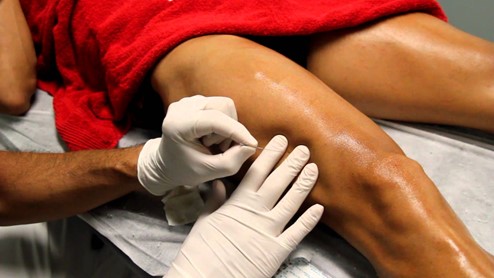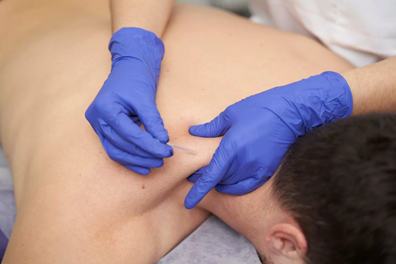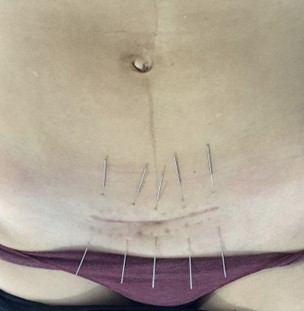Dry needling is a therapeutic technique widely used in physiotherapy, known for its effectiveness in treating muscular and fascial dysfunctions. It involves the insertion of fine, solid needles directly into myofascial trigger points, which are areas in the muscle that present tension and pain. Although it shares certain similarities with acupuncture, dry needling is based on anatomical and neurophysiological principles to relieve pain and improve muscle mobility.
What are the Benefits of Dry Needling?
The main benefits of dry needling include pain reduction, the release of muscle tension, and improved range of motion. By inserting the needle into the trigger points, a local reaction occurs that promotes muscle relaxation and a reduction in painful symptoms. This treatment can be particularly useful in managing various musculoskeletal conditions, as it facilitates faster and more effective recovery.

What Conditions Can Dry Needling Help With?
- Sports injuries: Dry needling is highly effective in treating sports injuries such as tendinitis, sprains, and muscle overloads. By releasing points of tension and improving blood flow in the affected area, the healing of injured tissue is accelerated, and the athlete’s downtime is reduced.
- Muscle tension: For those suffering from chronic or acute pain due to muscle contractures or tension, dry needling is an excellent therapeutic option. By targeting localized pain points, the technique relieves spasms and improves mobility, allowing for a quicker and more effective recovery.
- Scar treatment: Dry needling is also useful in the treatment of scars. In particular, it is effective in reducing adhesions and scar tissue that form around scars, improving the elasticity and function of surrounding tissues. This is especially beneficial for cesarean scars, where adhesions can cause restrictions in deep tissues, leading to pain or discomfort. Dry needling can help soften scar tissue, improving mobility in the area and preventing future complications.

Dry Needling and Pelvic Health
One area where dry needling has shown great promise is in the treatment of pelvic floor dysfunctions, particularly in Women’s Health. The pelvic floor is composed of a group of muscles that play a fundamental role in functions such as continence and supporting organs like the uterus, bladder, and rectum. Dysfunctions such as urinary incontinence, chronic pelvic pain, and sexual dysfunctions may be associated with the presence of trigger points in the pelvic floor muscles.
Through dry needling, these pain points can be deactivated, improving muscle function and reducing symptoms. This contributes to better sphincter control, pain relief, and an improved quality of life for women suffering from these issues, especially after pregnancy or childbirth.

Is Dry Needling Right for You?
Dry needling is a versatile and effective treatment for a wide range of muscular issues, from sports injuries to post-surgical scars. Additionally, its application in pelvic health offers an effective solution for women suffering from pelvic floor dysfunctions or cesarean scars. If you experience chronic muscle pain, tension, or are looking to improve the mobility of a scar, dry needling may be an option to consider.
Consult your specialized physiotherapist to evaluate whether this technique is suitable for you and take the next step toward a faster and more effective recovery.



